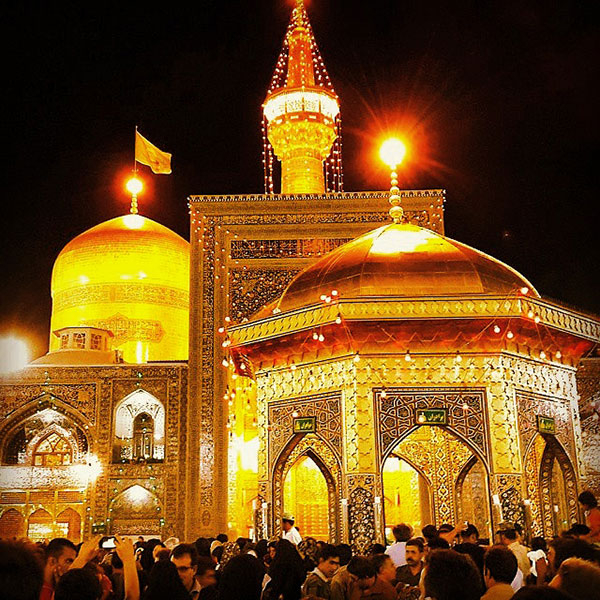Born: April 20, 702 AD, Madinah, Saudi Arabia
Died: December 14, 765 AD (age 63 years), Madinah, Saudi Arabia
Children: Mūsá al-Kāẓim ibn Jaʻfar, Isma'il ibn Ja'far, Abdallah al-Aftah, Ali al-Uraydi · See more
Parents: Muhammad al-Baqir, Umm Farwah bint Al-Qasim ibn Muhammad ibn Abi Bakr
Full name: Jaʿfar ibn Muḥammad al-Ṣādiq
Spouse: Hamīdah al-Barbariyyah
Imām al-Ṣādiq (a) (الإمام الصادق), is the sixth Imam of Imamiyya and the fifth Imam of Isam'ilis. His Imamate lasted thirty-four (lunar) years (114/733 - 148/765) and was concurrent with the reign of the last five Umayyad caliphs (that is, from Hisham b. 'Abd al-Malik onwards) and with that of the first two Abbasid caliphs, al-Saffah and al-Mansur al-Dawaniqi. Because of the weakness of the Umayyad rule at his time, Imam al-Sadiq (a) was able to have relatively wider scholarly activities. His companions, students, and those who quoted hadiths from him is said to have amounted to four-thousand people. Most of the hadiths of Ahl al-Bayt (a) recorded in Twelver Shi'a hadith collections are from Imam al-Sadiq (a). This is why Imamiyya is called Ja'fari School. Imam al-Sadiq (a) has had a high status in the eyes of prominent Sunni scholars. Abu Hanifa and Malik b. Anas were among the people who quoted hadiths from him.
Despite the weakness of the Umayyads and the requests from the Shi'a, Imam al-Sadiq (a) did not rise up against the caliphate. He rejected Abu Muslim al-Khurasani and Abu Salama, who asked him to become the caliph. He did not take part in the revolt of his uncle Zayd b. 'Ali either and discouraged the Shi'a from getting involved in any uprisings. However, he did not have good relations with the caliphs of his time either, and he had to do taqiyya (precautionary dissimulation) because of their persecution.
To facilitate his contacts with the Shi'a, Imam al-Sadiq (a) established the network of wikala (deputyship). The activities of this network continued and increasingly expanded until the end of the Minor Occultation. During Imam al-Sadiq's (a) time, the Ghulat became very active. The Imam (a) vehemently opposed them, declaring them infidels or polytheists.
The Imam (a) was summoned several times to Baghdad, and thus he traveled to Iraq and also visited Karbala, Najaf, and Kufa. He showed the grave of Imam Ali (a), which was previously unknown, to his companions.
Some Shi'a scholars believe that Imam al-Sadiq (a) was poisoned by al-Mansur al-Dawaniqi and thus martyred. He introduced Imam al-Kazim (a) to his companions as his successor, but to protect the life of Imam al-Kazim (a), he mentioned in his will five people, including al-Mansur, as the executors of his will. After the martyrdom of Imam Al-Sadiq (a), several sects appeared among the Shi'a, including Ismailis, Fatahiyya, and Nawusiyya.


















